

Max Davies
2026 Toyota HiAce review
4 Hours Ago
The entry-level Niro EV isn't as value-packed as you might expect, but its a no-nonsense EV that's practical and a bit of fun to drive.
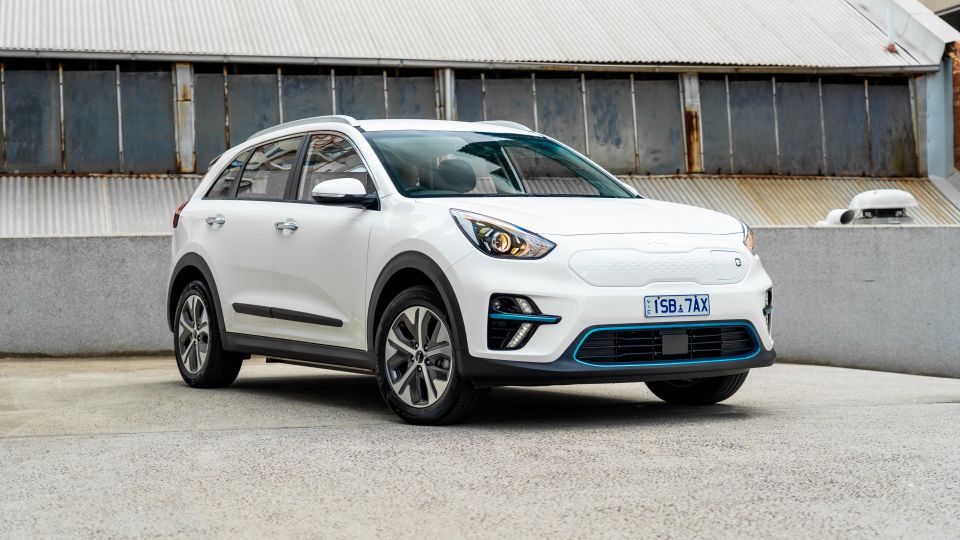
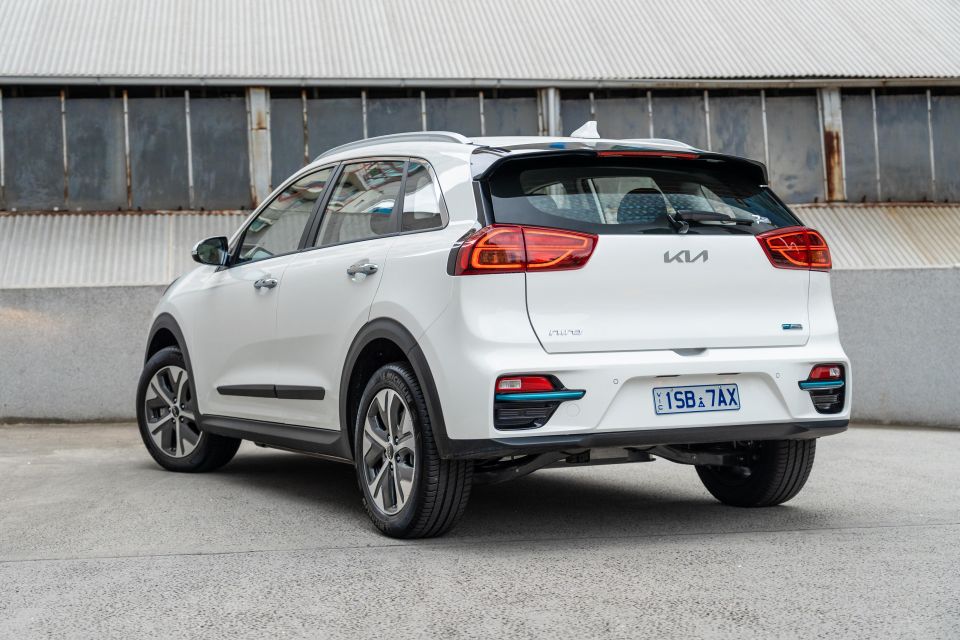

Quickly see how this car stacks up against its competition. Select any benchmark to see more details.
Where expert car reviews meet expert car buying – CarExpert gives you trusted advice, personalised service and real savings on your next new car.
The first-generation Kia Niro was a late arrival to Australia, launching in 2020 despite being available overseas as early as 2016.
When it arrived Down Under in facelifted form, the Kia Niro EV (known as the e-Niro elsewhere) became the Korean brand’s first all-electric model in Australia, using the same EV running gear as the Hyundai Kona Electric.
With 450 kilometres of claimed range, a conservative and practical crossover design, as well as Kia’s seven-year, unlimited-kilometre warranty, the electric Niro may not be as flashy as a Tesla, but aims to make the transition to zero-emissions motoring as seamless as possible.
Here on test we have the base 2022 Kia Niro EV S, the entry point into the Kia electric line-up in Australia.
With a second-generation model just months away, is the current car worth a look if you’re in the market now?

The entry-level Niro EV S on test is priced from $62,590 plus on-road costs, which at the time of writing translates to a drive-away price of $67,490.
If you want a bit more kit, the flagship Niro EV Sport is $65,990 before on-roads or $70,990 drive-away according to Kia’s configurator.
Both versions of the current Niro sit beneath the EV subsidy threshold in New South Wales, Victoria and South Australia – meaning buyers are eligible for $3000 rebates – though it’s above the threshold for Queensland ($58,000).
The second-generation Kia Niro is also due in the third quarter of 2022, bringing an overhauled design inside and out, enhanced driver assistance and infotainment technologies, and updated versions of the existing hybrid (HEV), plug-in hybrid (PHEV) and electric (EV) drivetrains.
It’s unclear, however, how Kia Australia will position the new Niro range in terms of pricing.
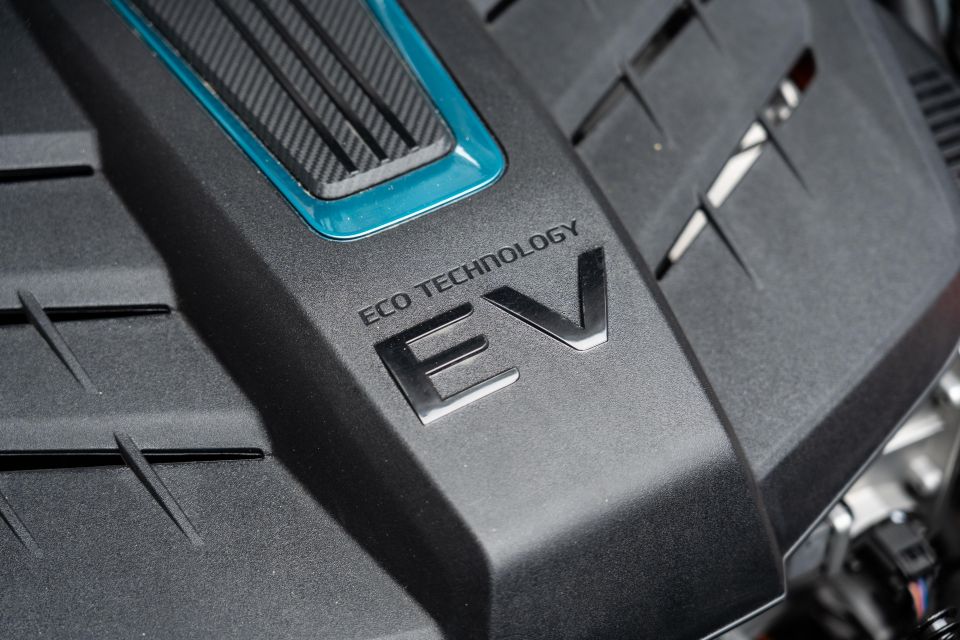
2022 Kia Niro pricing
All prices exclude on-road costs
Key rivals include:
All prices exclude on-road costs
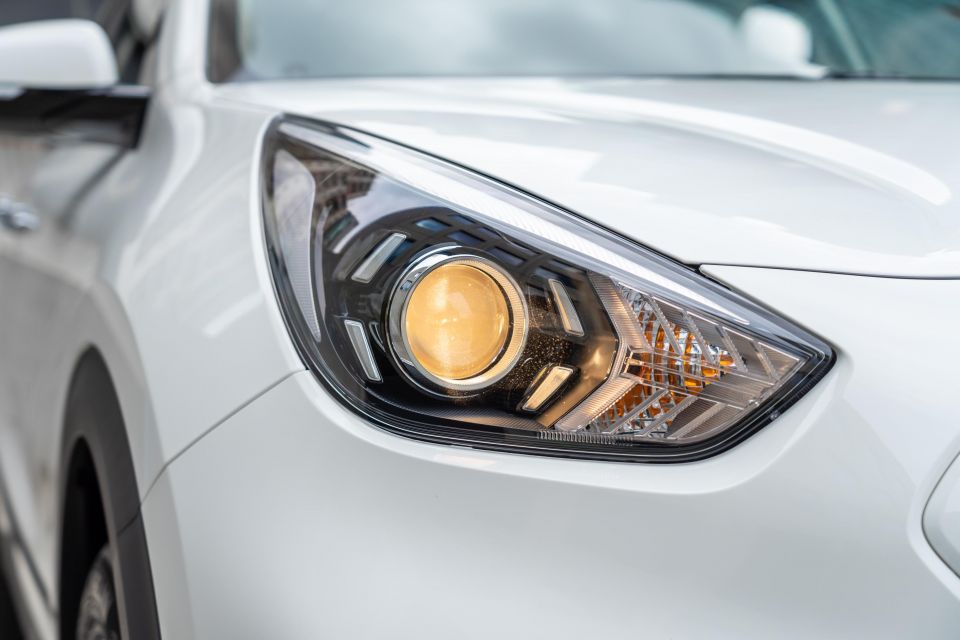
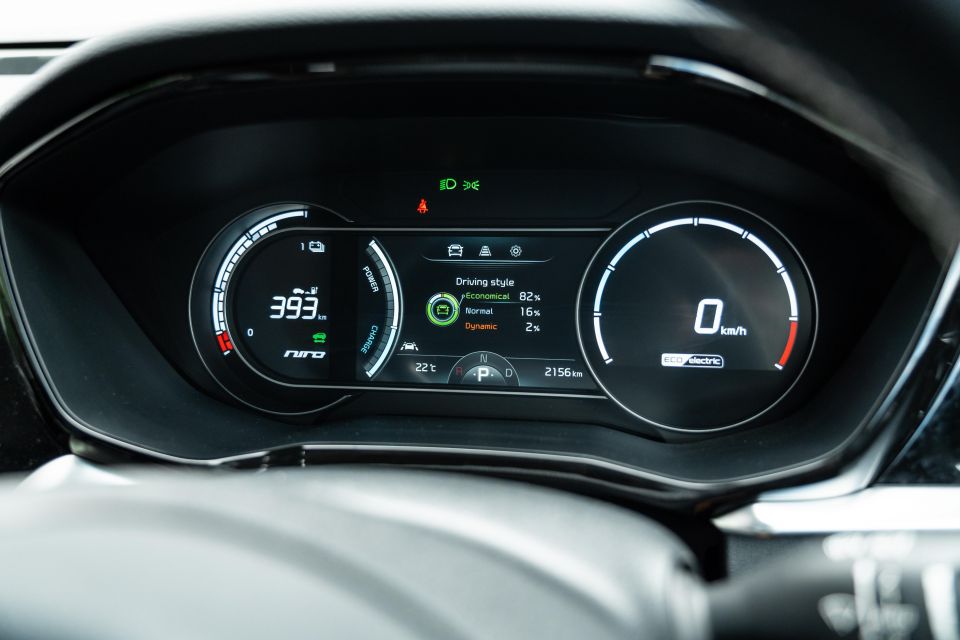
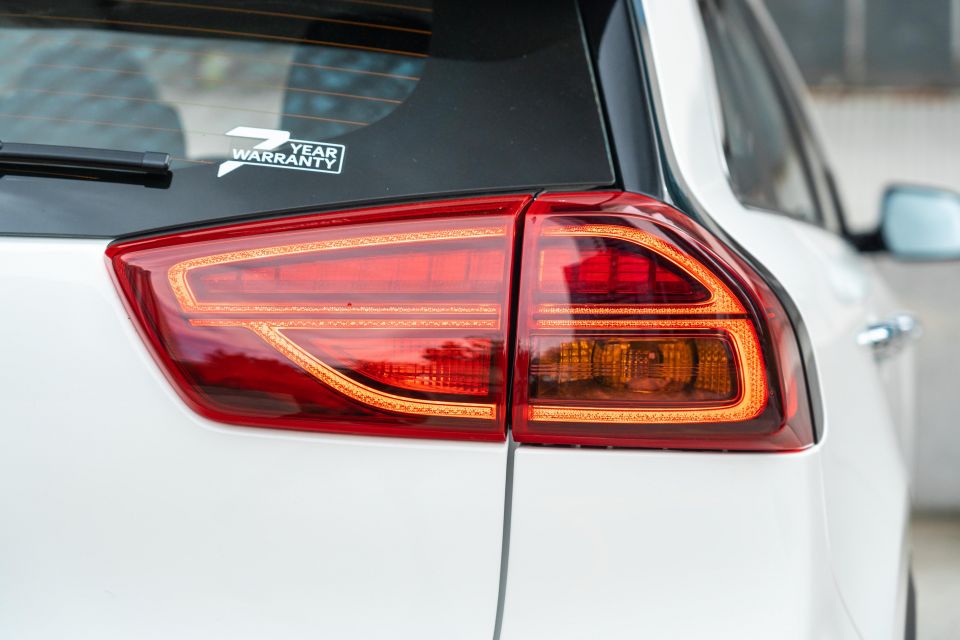
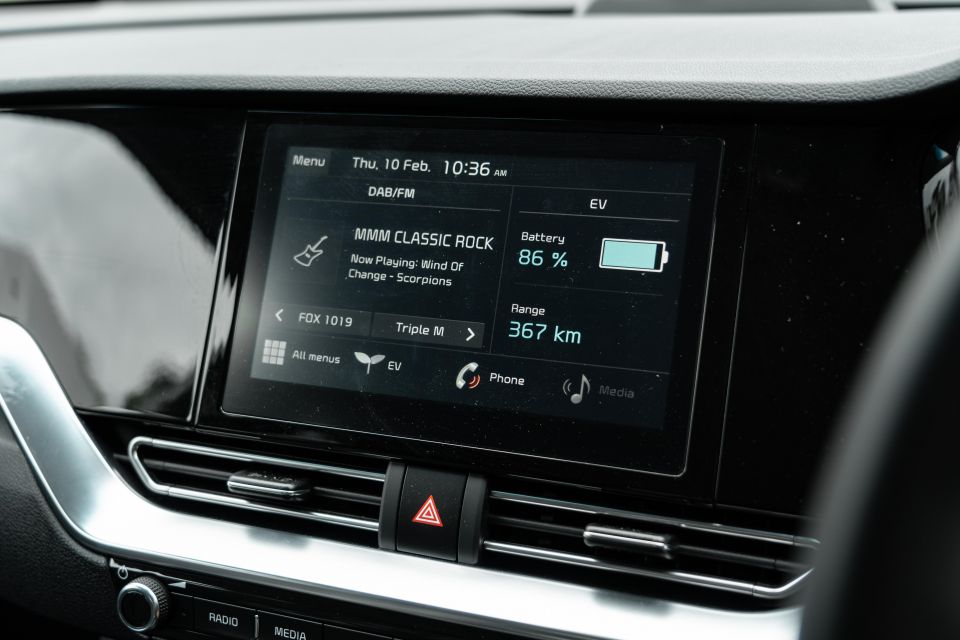
Buy your new car without the stress. It's fast, simple and completely free.

Great service from Travis and team, second time I have used this business would not hesitate to recommend them to anyone
Craig C.
Purchased a Ford Ranger in Sunshine Coast, QLD
CarExpert helped Craig save thousands on his Ford Ranger, now let us save you on your next new car.
Find a dealNiro EV S highlights:
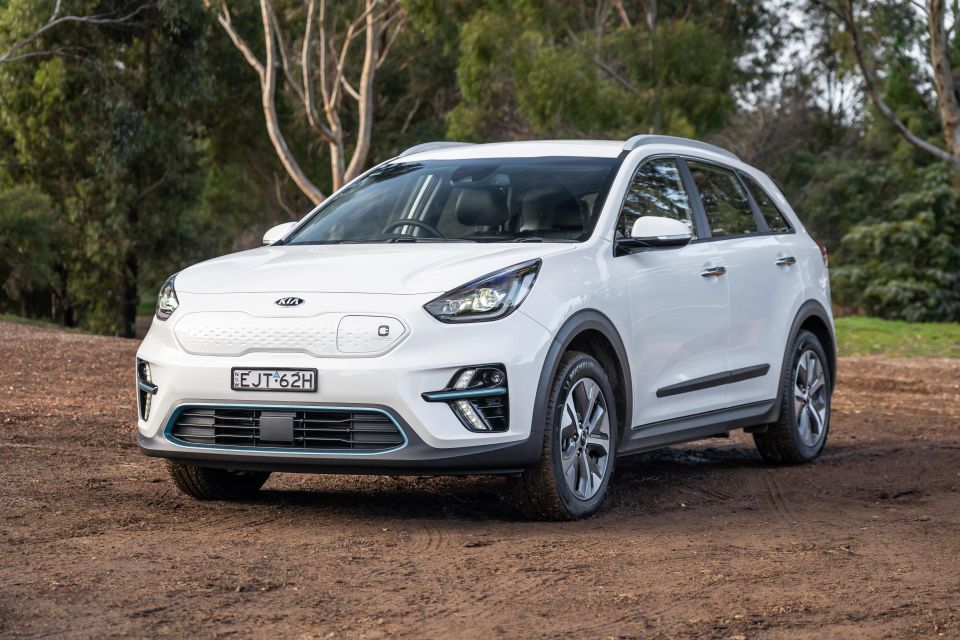
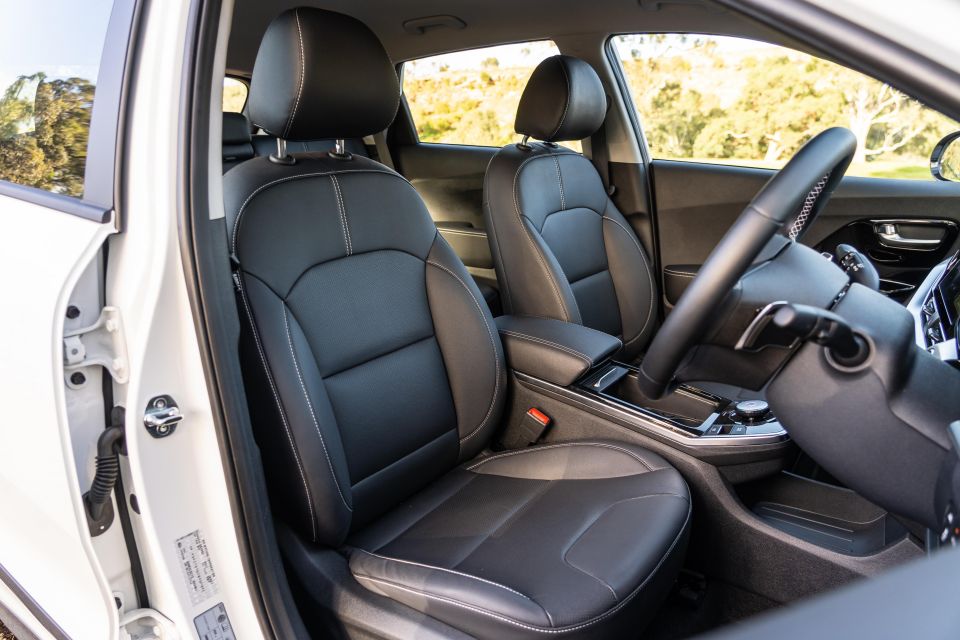
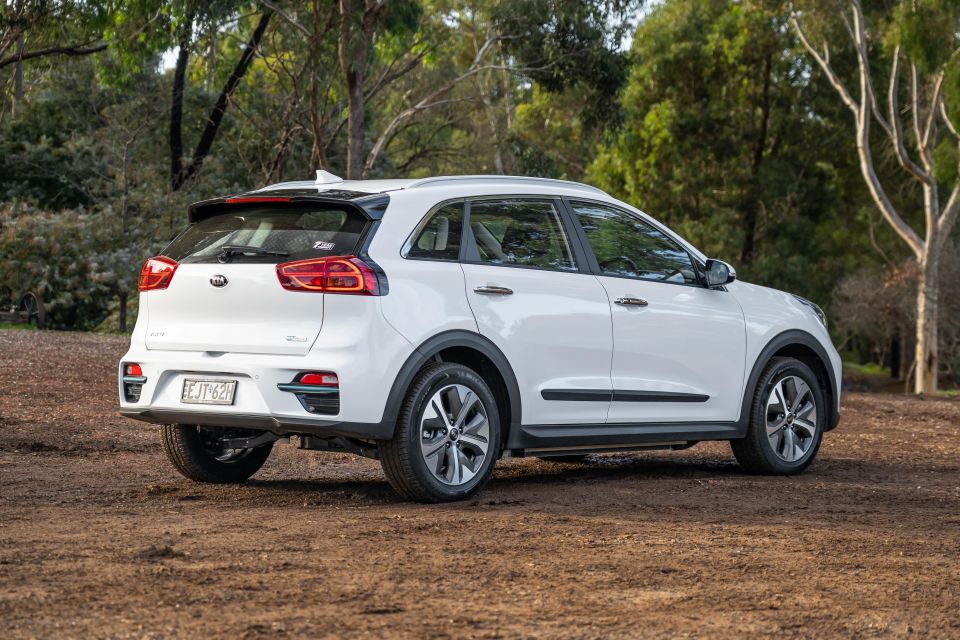
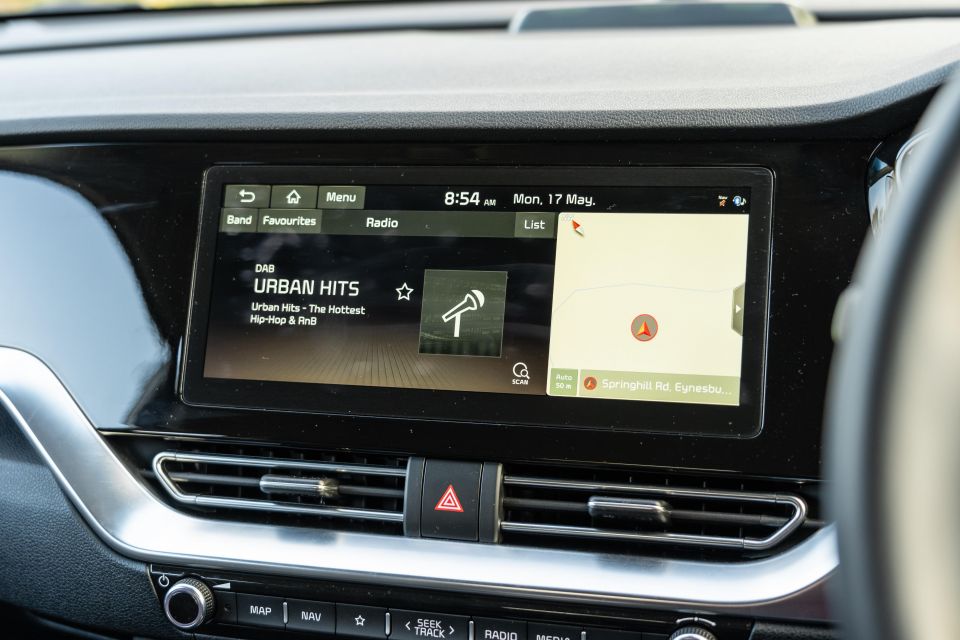
Niro EV Sport adds:
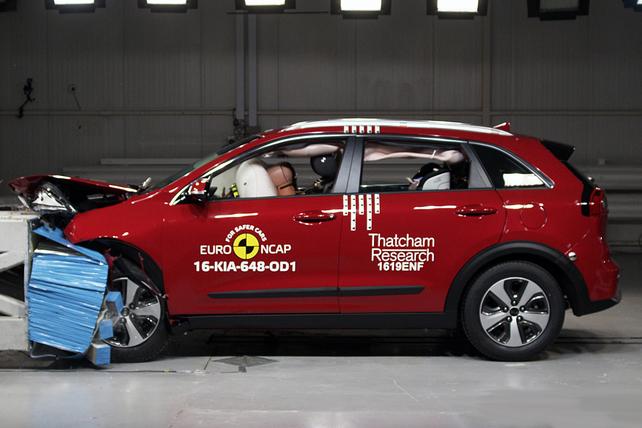
Hybrid and Plug-in Hybrid versions of the Niro wear a five-star ANCAP safety rating based on tests conducted by sister firm Euro NCAP in 2016. Niro EV variants remain unrated.
Category scores included 91 per cent for adult occupant protection, 80 per cent for child occupant protection, 70 per cent for pedestrian detection and 81 per cent for safety assist.
Standard safety equipment includes:
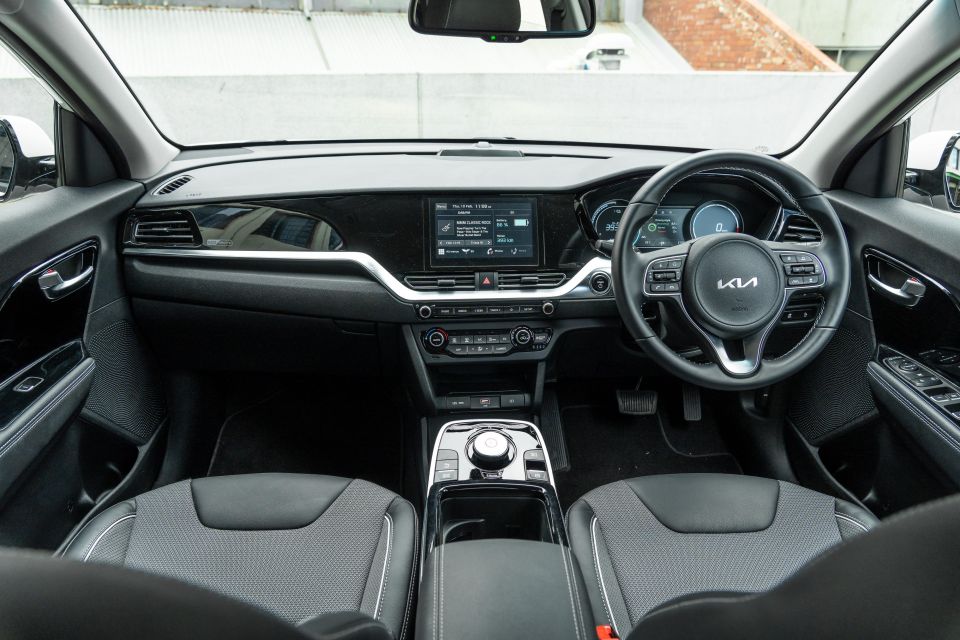
Considering the bold statements Kia has been making with its interiors of late – think EV6, Sorento and Sportage – the Niro feels like a bit of a time machine.
The overall design and layout is very much last-generation Kia, from the very dashboard to the old-design steering wheel. You could be forgiven for thinking you’re sitting in a previous-generation Sportage.
With that said, it’s an inoffensive place to spent time, and there’s a good mix of materials and finishes to make it feel well-made. However, its $40,000 origins are more apparent given its $62,000 asking price, particularly in this base model.
The main differentiators between the S on test and the higher-grade Sport trim are the infotainment system and the seat trim. The screen is a bit low-rent in this grade, but I prefer the seat trim.
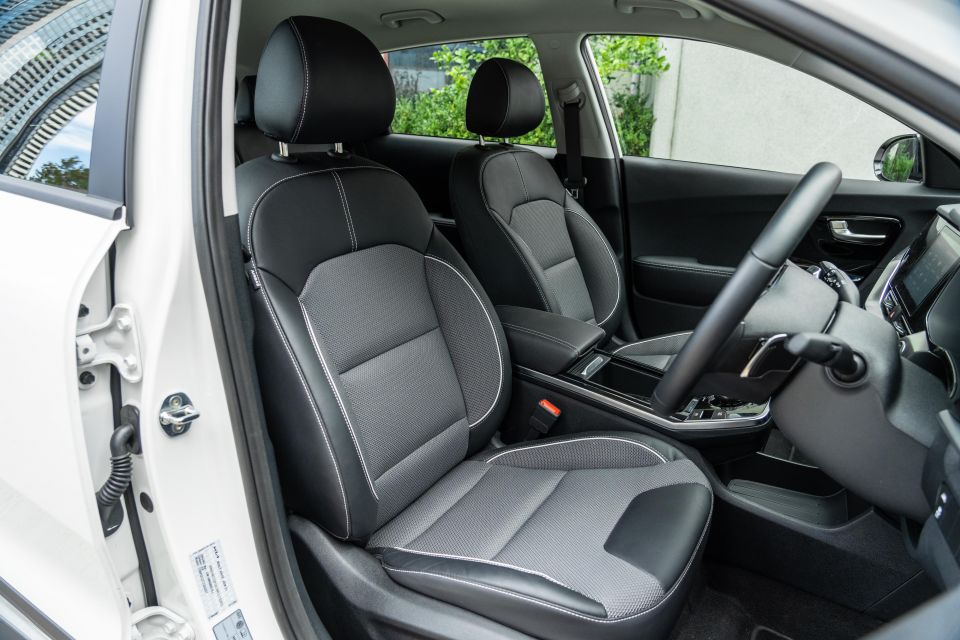

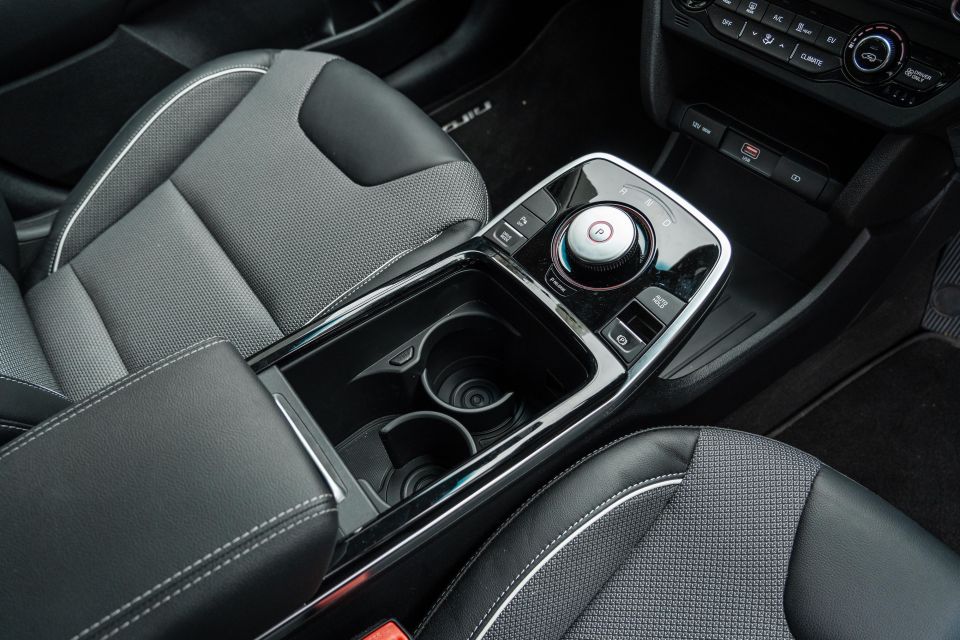
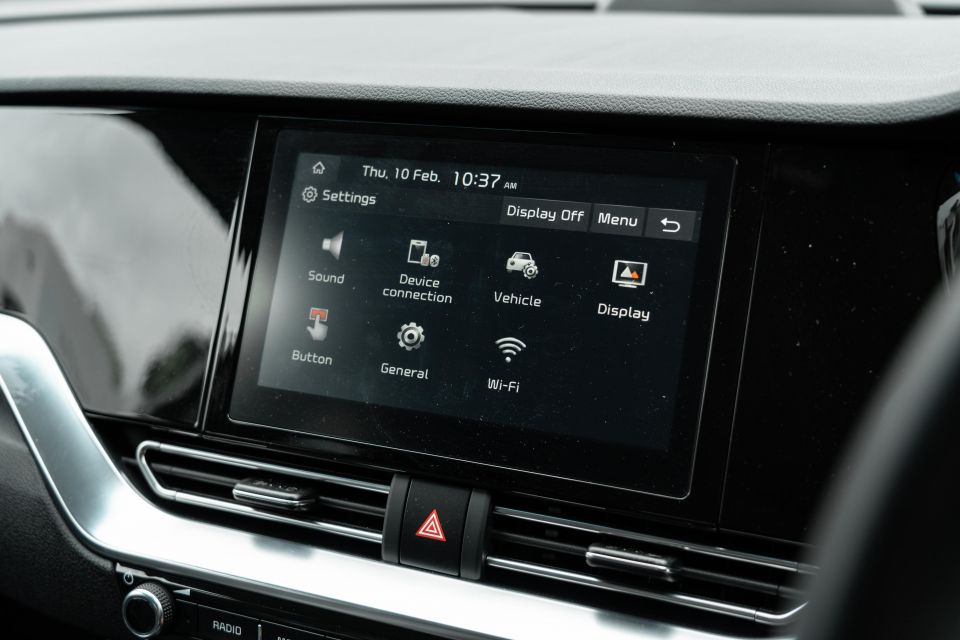
A standard 8.0-inch touchscreen shared with various low-grade Kia models offers wireless smartphone mirroring and DAB radio, but that’s about it. No navigation, and six speakers instead of the JBL-branded eight-speaker audio of the Sport make this a pretty basic fit-out.
Wireless Apple CarPlay worked well during our time with the car, though there’s no wireless phone charger to keep your phone juiced while it’s projecting apps.
The chunky leather steering wheel is an old design but still feels good, and the switchgear on the tiller is easy to use and logically placed. Ahead of the driver is an instrument cluster with LCD and TFT displays, and globally is the more basic of Niro clusters – a higher-end 7.0-inch partial digital cluster is available overseas but not available in local models.
Comfort and space up front is impressive, with comfortable and supportive seats backed by heaps of storage options and good ergonomics. I prefer the cloth/leather combination upholstery of the Niro S compared to the leather-trimmed pews of the Sport, and there’s still eight-way power seat adjustment with lumbar.

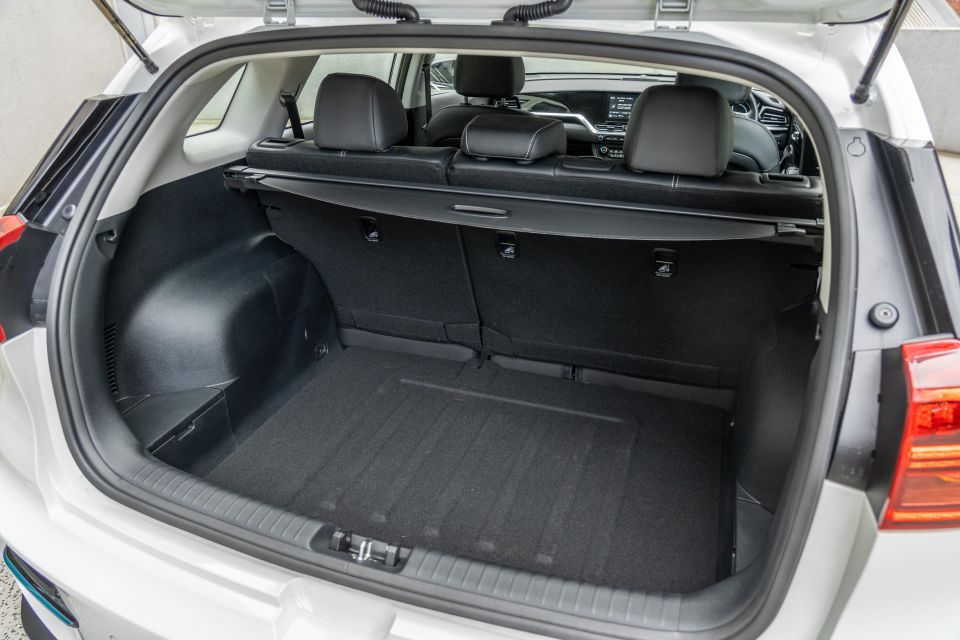
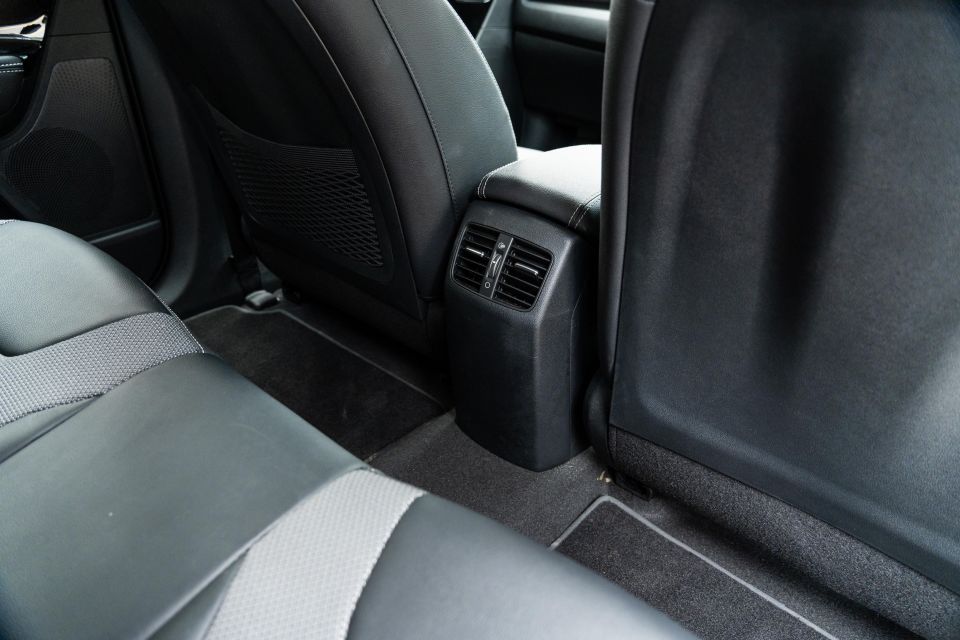
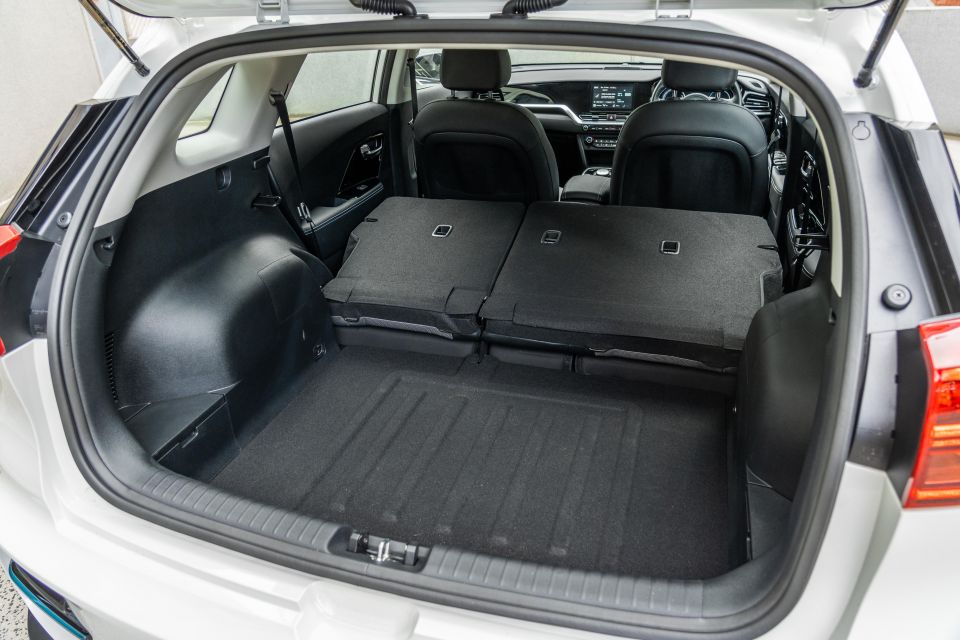
Compared to something like a Kona Electric or Nissan Leaf, the Niro’s second row is quite spacious. No wonder it serves as the basis of the Niro Plus purpose-built vehicle which will soon be a South Korean taxi staple, and a ride-share choice in markets like Australia – read all about that car here.
At 6’1 I can comfortably sit behind my own driving position and there’s bottle holders, rear air vents, a fold-down centre armrest with cupholders, and a map pocket behind the front passenger seat. The Niro makes for a good four seater, and occasional five seater.
There’s ISOFIX anchor points for both outboard positions, as well as top-tether points for all three positions.
Further back, there’s a spacious 451-litre boot with the second row in place, expanding to 1405L with the rear bench folded. With the second row in use, the Niro has more capacity than all major rivals including the dimensionally larger Model 3 and Polestar 2, as well as the Kona and Leaf.
Part of the reason for the large boot is the lack of spare wheel, with a tyre repair kit offered instead.
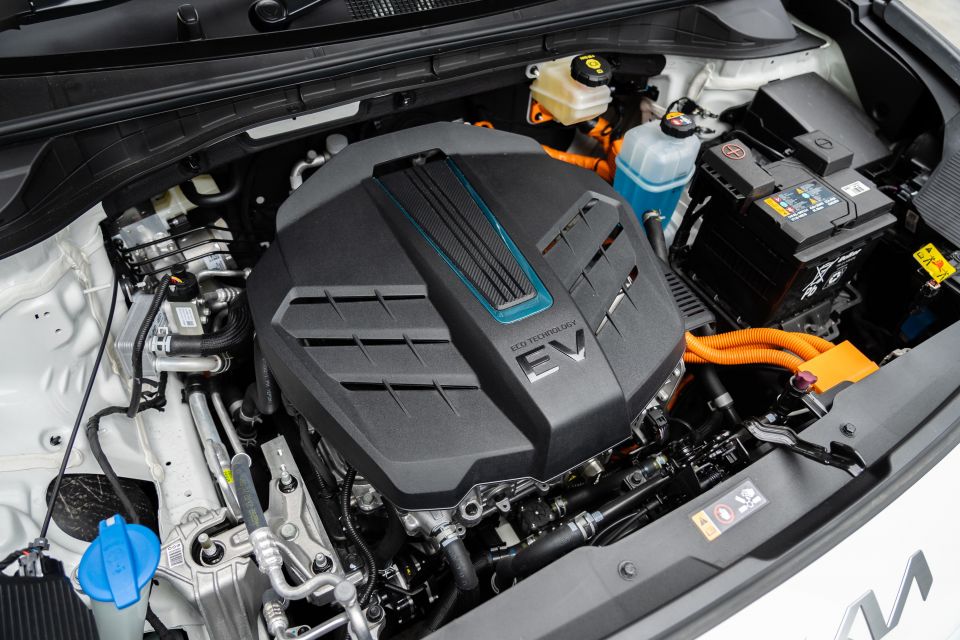
Australian-delivered versions of the Kia Niro EV are powered by a permanent magnet synchronous electric motor mounted on the front axle, developing 150kW of power and 395Nm of torque.
The standard battery pack in local models is the larger 64kWh lithium-ion unit with liquid cooling, though a smaller 39.2kWh pack is available overseas, and in the related Hyundai Kona Electric.
Kia quotes a WLTP-certified range of 455 kilometres, with energy consumption of 159Wh/km – or 15.9kWh/100km.
Using a 100kW DC fast charger can replenish 0-80 per cent charge in 54 minutes, while a 50kW DC charger ups that slightly to 1hr 15m.
An 7.2kW AC charger takes 9h 35m to complete a full charge (0-100 per cent), with the portable 2.3kW trickle charger included with the vehicle taking 29 hours via a standard wall socket.
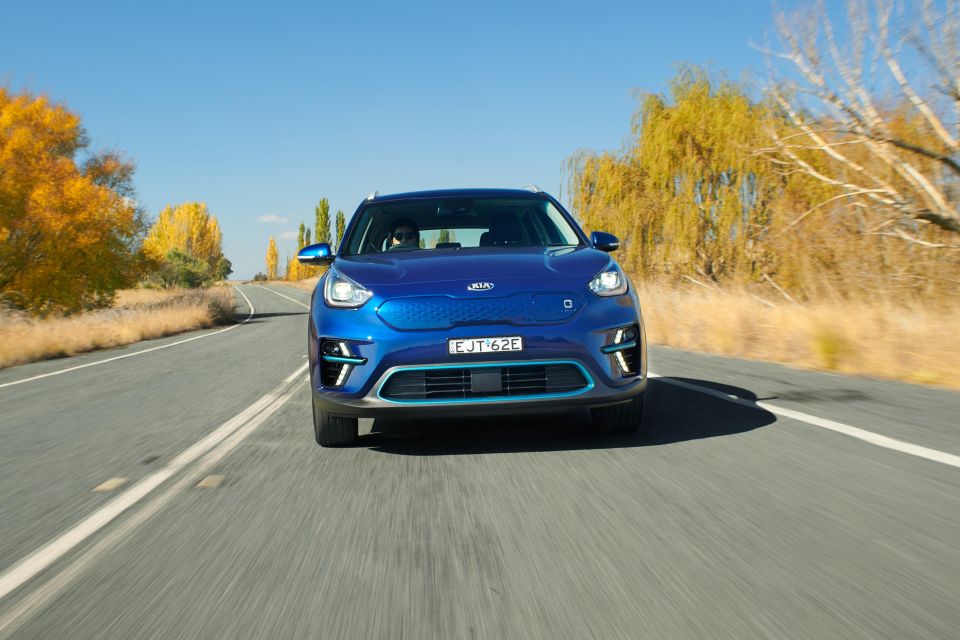
Despite the platform’s age, the Niro is a well-rounded offering irrespective of its powertrain.
The Niro is fairly unique in the local Kia line-up in that it arrived without a local suspension and steering tune, largely due to its age and relatively short lifecycle.
Instead, Kia Australia went for a calibration closely-aligned with European specification, blessing the Niro with a subtle sporty vibe but also with a decent level of compliance dialled in.
Performance from the 150kW/395Nm e-motor is strong, to the point where it’s almost hot hatch-quick. In other markets Kia claims 0-100 performance times of around 7.0 seconds, and by the seat of the pants it feels it.
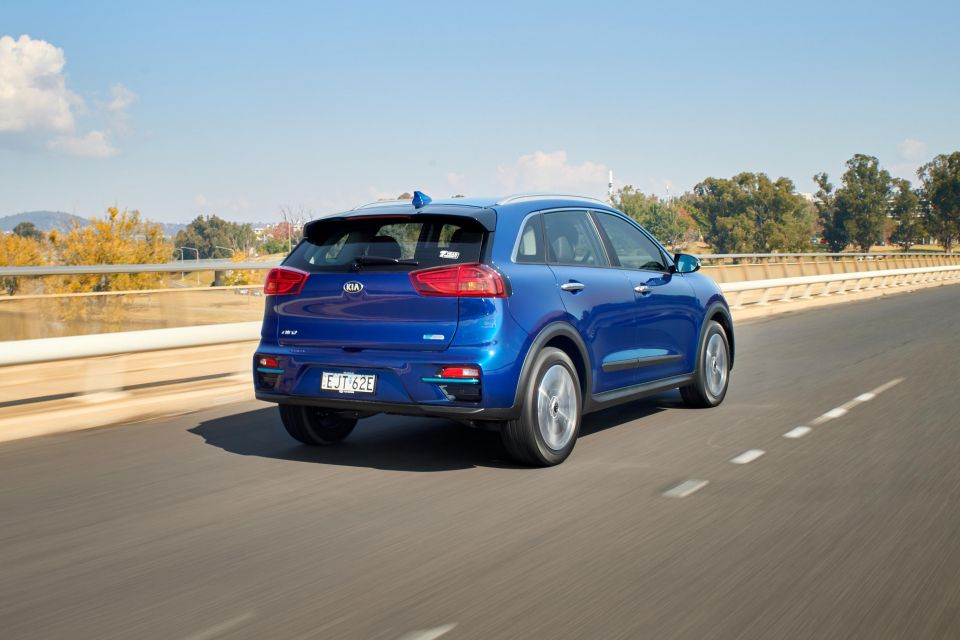
With all 395Nm available from rest, the Niro EV gets off the line quickly and pulls hard to triple figures. For most people it’s all the performance you’re ever going to need, even though it’s not Tesla fast.
It’s worth noting that, given the front-drive design, the Niro can be prone to spinning the front wheels in the wet, though the throttle calibration has been pretty well done to avoid it in most situations.
As noted earlier, the Niro’s European ride and handling tune errs on the firmer, sportier side. This means that sharper hits are felt. It’s far from crashy or unrefined, though it doesn’t have the same level of finesse as a Sportage.
It definitely settles nicely on the highway, likely a product of its European DNA. Not a bad cruiser for a compact EV.
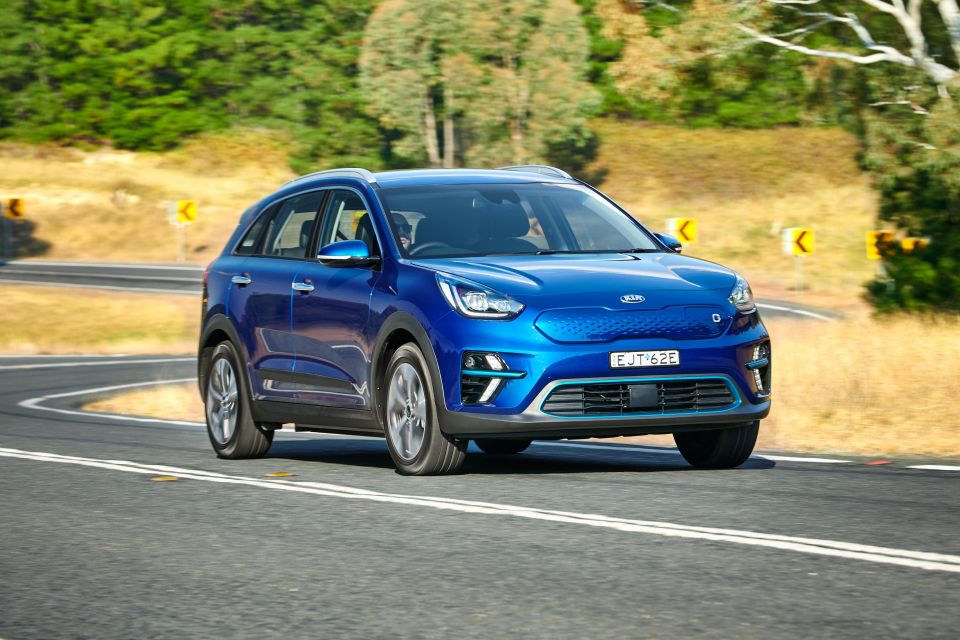
The steering is well weighted and quite direct, making the compact Niro feel more eager and darty than its near-1.8-tonne kerb weight might suggest. It’s actually a fun little thing to throw around, whether you’re zipping through city streets or driving up a winding B-road.
Body control is tight which makes the Niro feel more like a big hatchback than a small crossover. The big battery in the floor no doubt helps bring the centre of gravity down and adds to this hunkered down feeling.
I took the Niro on an extended trip down to Portarlington in Victoria’s south-west for a wedding, and was surprised at both the long distance comfort as well as efficiency.
The circa-210km round trip was mainly freeway and country highway, mixed in with some in-town stints. The Niro proved comfortable and reasonably refined, with an acceptable level of road noise permeating the cabin on coarse-chip roads.
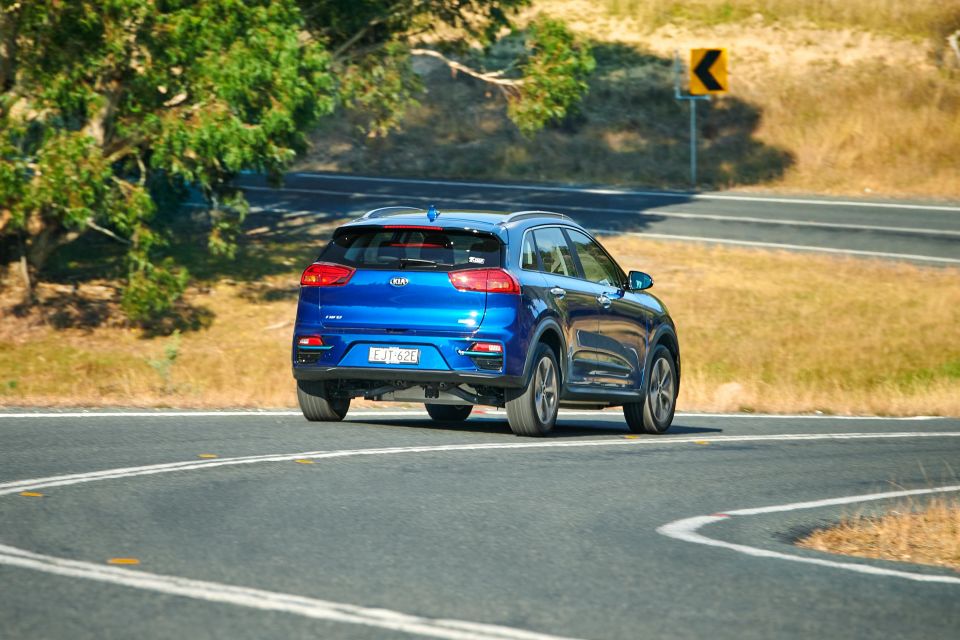
Where expert car reviews meet expert car buying – CarExpert gives you trusted advice, personalised service and real savings on your next new car.
We saw an indicated consumption figure of 14.3kWh/100km at the conclusion of our week-long run, covering more than 620 kilometres of mixed driving. That works out to a theoretical real-world range of 447 kilometres based on that figure, which lines up pretty well with Kia’s 455km claim.
As for the driver assistance features, we’ve come to expect good things from Kia, and the Niro delivers in that respect despite its age.
The adaptive cruise control and Lane Follow Assist centring functions make highway driving pretty easy, though some may not like the level of assistance required to accurately keep the vehicle centred in its lane. Unfortunately the base Niro EV missed out on blind-spot monitoring and rear cross-traffic alert functions, which would be good additions.
No doubt the next-generation model, due in the third quarter of 2022, will build on this further with a lighter platform, more technology and a more refined cabin.

The Niro is covered by Kia’s seven-year, unlimited-kilometre warranty, bolstered by seven years of capped-price servicing and up to eight years of roadside assist.
Further, the high-voltage systems in Kia’s electrified models – including the Niro EV – are warranted for seven years or 150,000 kilometres, whichever comes first.
Scheduled maintenance is required every 12 months or 15,000 kilometres, again whichever comes first.You can either pay-as-you-go or pre-pay for three-, five- or seven-year packages – costing $1164, $1728 and $2803 respectively.
Worth noting also is, at the time of writing Kia is offering three years of free scheduled servicing should you choose to finance your vehicle through Kia Finance, representing a saving of $1164.
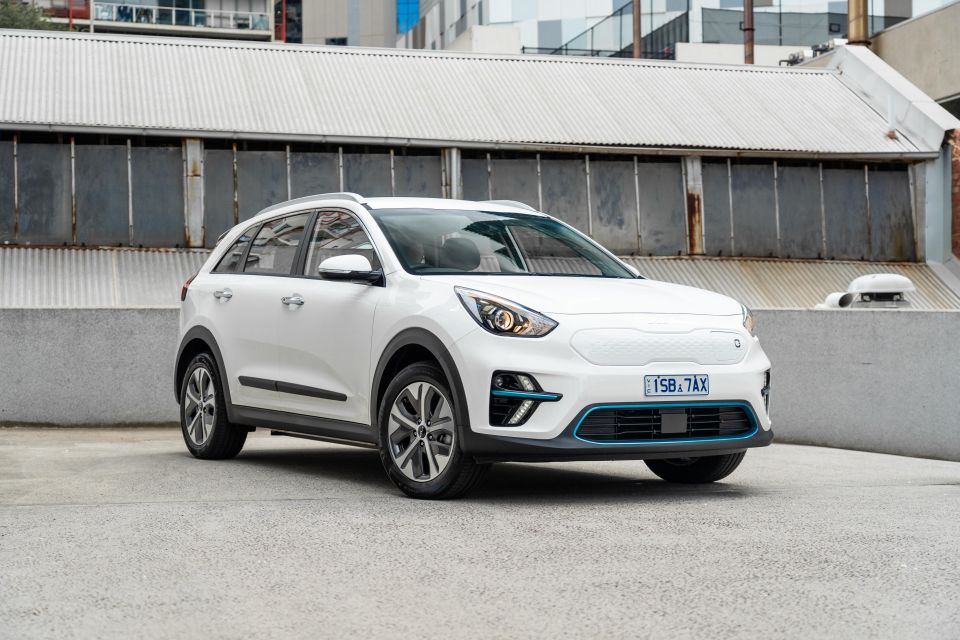
It’s easy to see why the electric Kia Niro has been a hit in other markets. It’s an electric vehicle that looks and feels like a conventional car, and offers performance and range that won’t blow your socks off… but also won’t leave you red-faced at the lights or invoke some form of range anxiety.
It’s also impressively practical, particularly compared to its Kona Electric cousin, and includes the bulk of assistance and convenience features that you’d expect at the price point. There’s plenty of shared features with other Kia models as well which means there’s little, if any, learning curve to deal with bar charging it.
The main issue for the Niro in Australia is that it arrived well into the latter stages of its lifecycle and is priced against very capable, newer competition in the Polestar 2 and Tesla Model 3. Australia also misses out on a lot of features available in other regions, though that’s less evident in the base model.
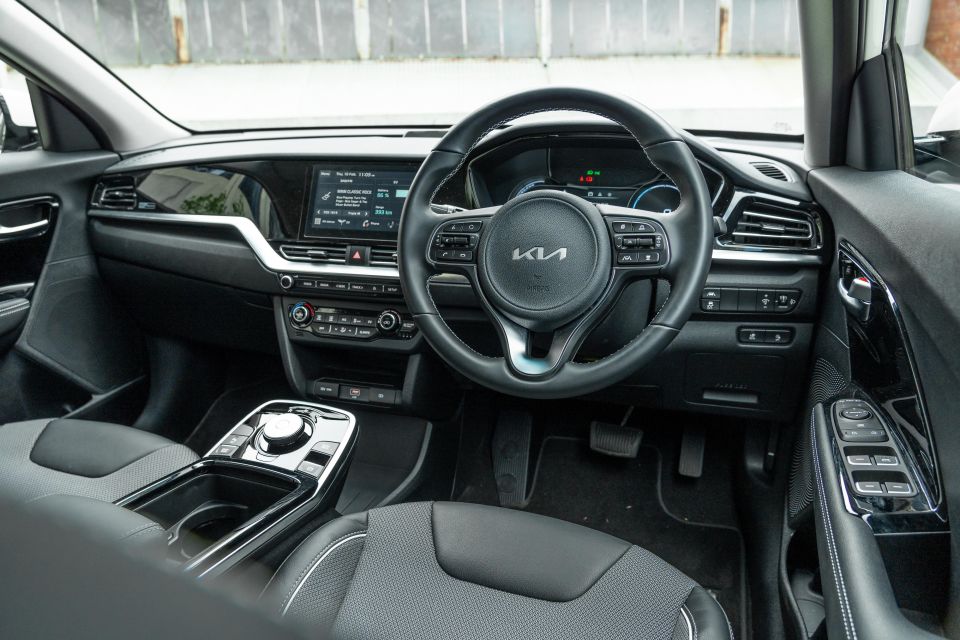
The higher-spec Niro EV Sport is arguably the best version of the electric SUV here, but it’s even dearer again and isn’t far off the base EV6 in terms of pricing – though its larger dedicated EV stablemate is effectively sold out until 2023-24 based on current allocation numbers, admittedly.
What the Niro does have in its favour, however, is you’re more likely to be able to get your hands on one sooner rather than later, instead of the 12-month-plus wait times we’re seeing for most electric vehicles nowadays.
Plus, the company is currently offering attractive finance deals with three years of free servicing to further sweeten the deal. If you want EV now, and don’t want to make a scene about it, the current Niro could be worth a look.
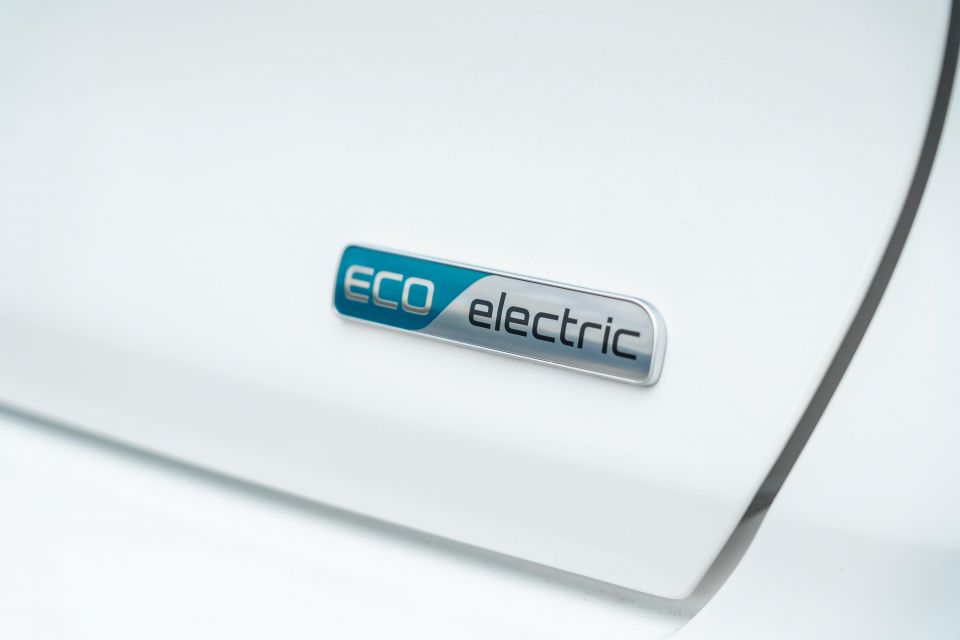
Click the images for the full gallery
MORE: Kia Niro EV v Hyundai Kona Electric v Nissan Leaf e+ comparison MORE: Everything Kia Niro
Where expert car reviews meet expert car buying – CarExpert gives you trusted advice, personalised service and real savings on your next new car.
James Wong is an automotive journalist and former PR consultant, recognised among Australia’s most prolific motoring writers.


Max Davies
4 Hours Ago


William Stopford
20 Hours Ago


Ben Zachariah
21 Hours Ago


Derek Fung
21 Hours Ago


Matt Campbell
1 Day Ago


William Stopford
2 Days Ago